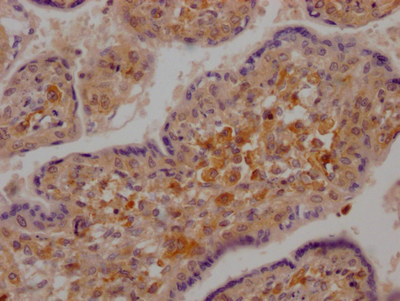DDX58 codes for RIG-I, which preferentially binds to short dsRNA sequences with 5′-phosphates. RIG-I has a very low threshold of activation, and the presence of just 20 suitable dsRNA ligands is sufficient to stimulate RIG-I activation and signaling. RIG-I signaling via MAVS not only leads to the induction of type I IFN responses via TBK1 and IRF7/8, but it also activates caspase-8-dependent apoptosis, preferentially in tumor cells. Furthermore, RIG-I was also found to mediate MAVS-independent inflammasome activation, specifically in the context of viral infection. RIG-I is crucial to the specific innate response to IAV infection.
This recombinant DDX58 antibody was developed with the Single B cell platform. The main process included identification and isolation of single B cells; amplification and cloning of DDX58 antibody gene; expression, screening, and identification of antibody specificity. And this DDX58 antibody has been validated in ELISA, IHC.






